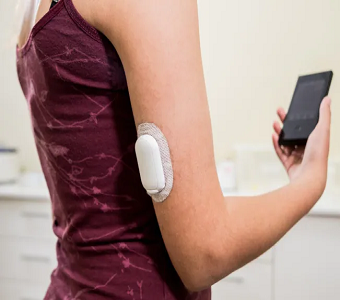Yesterday after market, Achillion (ACHN) released data and a strategic update, including interim data for C3G and PNH indications. The stock was down 20% leading up to this data so there were some fears of subpar data being leaked early. Although PNH data was rather disappointing, we were primarily interested in C3G, which remains promising.
Patients with C3G have an over active alternative pathway – which deposits C3 fragments in the kidney overtime and eventually leads to a non-functioning kidney. Achillion’s ACH-4771, a factor D inhibitor, has shown to reduce alternative pathway activity and reverse the effects of an overactive alternative pathway that C3G patients struggle with.
We were looking at two trends for this interim data:
- See if the trends in patients in the 14 day trial follow that of the initial 4 patients that were reported (increase in intact C3, reduction in C3 fragments, Ba&Bb products and proteinuria).
- See if biomarker trends are durable at longer durations
14-Day Biomarker Data Validates Factor D Proof of Mechanism in C3G
The 14 day study enrolled 6 patients, 5 of which showed early proteinuria reduction. Increased proteinuria (or ACR ratio) are used as early signals of kidney damage. We were looking to see that:
- intact C3 levels rose and
- Reduction in C3 fragments, Ba & Bb products and the ACR ratio
The 14 day study showed:
- 4/6 patients saw increase in intact C3 levels, 1 patient remained the same and 1 declined
- 4/6 patients saw reduction in C3 fragments, 1 patient’s data was not detectable and 1 patient was in process
- 6/6 patients had a reduction in Ba & Bb products
- 5/6 patients had reduction in uACR ratio, with an average decline of 39%
- ACH-4771 was well-tolerated with no treatment-related SAEs
The above trends were in line with what the company had previously shown (see here) and is evidence that the drug slows the alternative pathway hyperactivity. This should theoretically result in a healthier kidney.
Proof of Concept Study Data Supportive, But Early
ACHN is currently running a 12 month proof of concept open label trial (open label) to show the biomarker data above is durable beyond 14 days. The company presented data for 3 patients at 1, 2 and 4 month. We were expecting more data to be presented, not just 3 patients. For the 3 patients that had data, it was promising.
Patient 1 (2 month)
- Increase in C3 by 60% from Day 1 baseline
- Decrease in Bb by 23% from Day 1 baseline
- Decrease in ACR by 27% from Day 1 baseline
- eGFR remained stable
Patient 2 (4 month)
- Increase in C3 by 55% from Day 1 baseline
- Decrease in Bb by 41% from Day 1 baseline
- Decrease in ACR by 23% from Day 1 baseline
- eGFR levels declined
Patient 3 (1 month)
- Increase in C3 by 63% from Day 1 baseline
- Decrease in Bb by 70% from Day 1 baseline
- Increase in ACR by 36% from Day 1 baseline
- eGFR levels remained stable

In the 3 patients above, biomarker data showed there was a longer term effect on kidney function. This data on 3 patients is very early, but supportive that ACH-4771 is showing some signs of efficacy.
Patient #3 had a rise in ACR after 1 month. This was concerning but may also be a one off instance. The company expects to present additional interim 3- and 6-month data in 2H 2019.
We expect the FDA will require Achillion to run a Phase 3 in C3G after they announce data in 2019, replacing our initial expectation of receiving accelerated approval on Phase 2 results.
ACHN Presents Upside, But With Development Risk
So far, ACHN has promising early data in a C3G indication with no approved treatments. We believe the company could have pricing power with a small target population (~8K patients) and no other treatment options.
We estimate a $300,000 drug price (half of ALXN Soliris) and 30% penetration rate (2,400 patients), Achillion can hit peak sales of $720M. However, with a likely Phase 3 after the ongoing Phase 2, we believe the pathway to development is ways out (at least 2022). We could see ACHN justifying a $4.50 share price in 2019, however with no near term catalysts until 2H 2019, we are not very intrigued by the value proposition.
ACHN will end 2018 with cash balance of $280M ($2.00/share). The company expects to burn up to $85M in 2019. That is a very steep burn rate for a company with early stage studies. Assuming it trades at cash and remaining pipeline is a 0, that presents downside of 30% from current market price.
Bottom Line: If you are willing to hold ACHN for the next 6+ months, the company may present a rewarding opportunity. Data is early, but promising and ACHN is funded for at least next 12 months. We are not big fans of the lack of catalysts and the company's excessive burn rate.
Targeting PNH With Next Generation Product
Achillion’s update in PNH was rather disappointing. The company announced that ACH-4471 was not moving forward as monotherapy in PNH due to there being a treatment already in market (Alexion’s Soliris). The company will continue development of ACH-4771 in combination with C5 inhibitor target.
The company will now target PNH with a next generation candidate ACH-5228, which has shown to be 3-4x more potent. A Phase 1 study is initiating in early 2019. We were never really too interested in PNH, so there was no value placed in our $4.50 price target. If PNH does workout, it would be a great cherry on top.
PropThink contributors are LONG ACHN and will be looking to sell in next 48 hours.
Access This Content Now
Sign Up Now!




